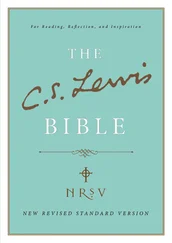Standard Template Library Programmer's Guide
Здесь есть возможность читать онлайн «Standard Template Library Programmer's Guide» весь текст электронной книги совершенно бесплатно (целиком полную версию без сокращений). В некоторых случаях можно слушать аудио, скачать через торрент в формате fb2 и присутствует краткое содержание. Жанр: Программирование, Справочники, на английском языке. Описание произведения, (предисловие) а так же отзывы посетителей доступны на портале библиотеки ЛибКат.
- Название:Standard Template Library Programmer's Guide
- Автор:
- Жанр:
- Год:неизвестен
- ISBN:нет данных
- Рейтинг книги:4 / 5. Голосов: 1
-
Избранное:Добавить в избранное
- Отзывы:
-
Ваша оценка:
- 80
- 1
- 2
- 3
- 4
- 5
Standard Template Library Programmer's Guide: краткое содержание, описание и аннотация
Предлагаем к чтению аннотацию, описание, краткое содержание или предисловие (зависит от того, что написал сам автор книги «Standard Template Library Programmer's Guide»). Если вы не нашли необходимую информацию о книге — напишите в комментариях, мы постараемся отыскать её.
Standard Template Library Programmer's Guide — читать онлайн бесплатно полную книгу (весь текст) целиком
Ниже представлен текст книги, разбитый по страницам. Система сохранения места последней прочитанной страницы, позволяет с удобством читать онлайн бесплатно книгу «Standard Template Library Programmer's Guide», без необходимости каждый раз заново искать на чём Вы остановились. Поставьте закладку, и сможете в любой момент перейти на страницу, на которой закончили чтение.
Интервал:
Закладка:
There exist some types U and V such that Pair provides the same interface as a pair . [1]
unary_function
| Member | Where defined | Description |
|---|---|---|
argument_type |
Adaptable Unary Function | The type of select2nd 's argument: Pair |
result_type |
Adaptable Unary Function | The type of the result: Pair::second_type |
const Pair::second_type& operator()(const Pair& p) const |
Adaptable Unary Function | Function call. The return value is p.second . |
All of select2nd 's members are defined in the Adaptable Unary Function requirements. Select2nd does not introduce any new members.
[1] Pair is not actually required to be a pair , but merely to support the same interface as pair . In almost all cases the template parameter will be a pair , but it is occasionally useful for it to be something else. One example is a struct that has the members first , second , and third .
identity , select1st , project1st , project2nd
subtractive_rng
Category: functors
Component type: type
Subtractive_rng is a Random Number Generator based on the subtractive method [1]. It is a Unary Function: it takes a single argument N , an unsigned int , and returns an unsigned int that is less than N . Successive calls to the same subtractive_rng object [2] yield a pseudo-random sequence.
int main() {
subtractive_rng R;
for (int i = 0; i < 20; ++i) cout << R(5) << ' ';
cout << endl;
}
// The output is 3 2 3 2 4 3 1 1 2 2 0 3 4 4 4 4 2 1 0 0
Defined in the standard header functional, and in the nonstandard backward-compatibility header function.h. This function object is an SGI extension; it is not part of the C++ standard.
None.
Random Number Generator, Adaptable Unary Function
None.
unary_function
| Parameter | Description | Default |
|---|---|---|
argument_type |
Adaptable Unary Function | The type of a subtractive_rng 's argument: unsigned int . |
result_type |
Adaptable Unary Function | The type of the result: unsigned int . |
subtractive_rng(unsigned int seed) |
subtractive_rng |
See below. |
subtractive_rng() |
subtractive_rng |
See below. |
unsigned int operator()(unsigned int N) |
Adaptable Unary Function | Function call. Returns a pseudo-random number in the range [0, N) . |
void initialize(unsigned int seed) |
subtractive_rng |
See below. |
These members are not defined in the Adaptable Unary Function requirements, but are specific to subtractive_rng .
| Member | Description |
|---|---|
subtractive_rng(unsigned int seed) |
The constructor. Creates a subtractive_rng whose internal state is initialized using seed . |
subtractive_rng() |
The default constructor. Creates a subtractive_rng initialized using a default value. |
void initialize(unsigned int seed) |
Re-initializes the internal state of the subtractive_rng , using the value seed . |
[1] See section 3.6 of Knuth for an implementation of the subtractive method in FORTRAN. Section 3.2.2 of Knuth analyzes this class of algorithms. (D. E. Knuth, The Art of Computer Programming. Volume 2: Seminumerical Algorithms , second edition. Addison-Wesley, 1981.)
[2] Note that the sequence produced by a subtractive_rng is completely deterministic, and that the sequences produced by two different subtractive_rng objects are independent of each other. That is: if R1 is a subtractive_rng , then the values returned when R1 is called depend only on R1 's seed and on the number of times that R1 has been called. Calls to other subtractive_rng objects are irrelevant. In implementation terms, this is because the class subtractive_rng contains no static members.
Random Number Generator
Function object adaptors
binder1st
Categories: functors, adaptors
Component type: type
Binder1st is a function object adaptor: it is used to transform an adaptable binary function into an adaptable unary function. Specifically, if f is an object of class binder1st , then f(x) returns F(c, x) , where F is an object of class AdaptableBinaryFunction and where c is a constant. Both F and c are passed as arguments to binder1st 's constructor. [1]
The easiest way to create a binder1st is not to call the constructor explicitly, but instead to use the helper function bind1st .
Finds the first nonzero element in a list.
list L;
…
list::iterator first_nonzero = find_if(L.begin(), L.end(), bind1st(not_equal_to(), 0));
assert(first_nonzero == L.end() || *first_nonzero != 0);
Defined in the standard header functional, and in the nonstandard backward-compatibility header function.h.
| Parameter | Description |
|---|---|
AdaptableBinaryFunction |
The type of the binary function whose first argument is being bound to a constant. |
Adaptable Unary Function
AdaptableBinaryFunction must be a model of Adaptable Binary Function.
unary_function
| Member | Where defined | Description |
|---|---|---|
argument_type |
Adaptable Unary Function | The type of the function object's argument, which is AdaptableBinaryFunction::second_argument_type |
result_type |
Adaptable Unary Function | The type of the result: AdaptableBinaryFunction::result_type |
result_type operator()(const argument_type& x) const |
Adaptable Unary Function | Function call. Returns F(c, x) , where F and c are the arguments with which this binder1st was constructed. |
binder1st(const AdaptableBinaryFunction& F, AdaptableBinaryFunction::first_argument_type c) |
binder1st |
See below |
template binder1st bind1st(const AdaptableBinaryFunction& F, const T& c); |
binder1st |
See below |
These members are not defined in the Adaptable Unary Function requirements, but are specific to binder1st .
Читать дальшеИнтервал:
Закладка:
Похожие книги на «Standard Template Library Programmer's Guide»
Представляем Вашему вниманию похожие книги на «Standard Template Library Programmer's Guide» списком для выбора. Мы отобрали схожую по названию и смыслу литературу в надежде предоставить читателям больше вариантов отыскать новые, интересные, ещё непрочитанные произведения.
Обсуждение, отзывы о книге «Standard Template Library Programmer's Guide» и просто собственные мнения читателей. Оставьте ваши комментарии, напишите, что Вы думаете о произведении, его смысле или главных героях. Укажите что конкретно понравилось, а что нет, и почему Вы так считаете.











